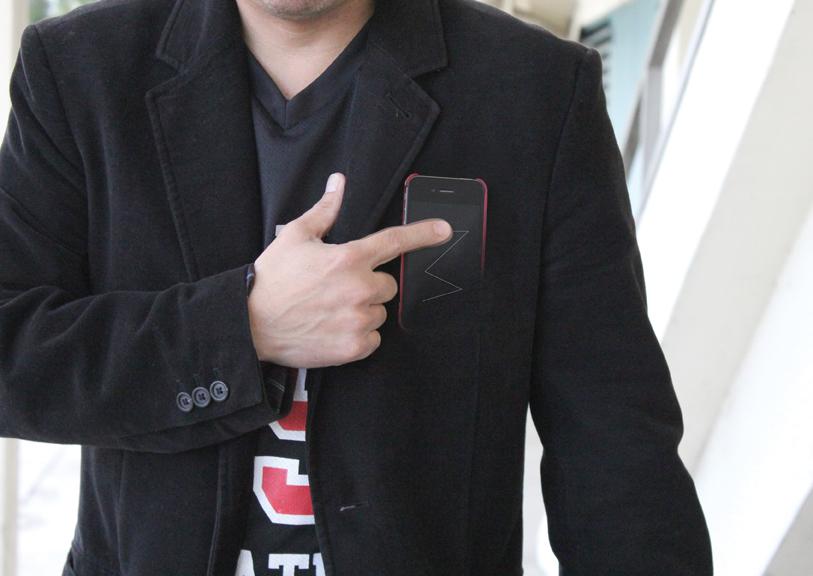
While time travel and holograms may be ideas of the future, slight modifications to existing digital devices have already begun to revolutionize the realm of personal electronics.
Stealth technology has been used for years by military and government officials to maintain secrecy in the skies. However, this concept is no longer only applicable to such covert operations as providing invisibility to military aircraft through radar-deflecting devices. Stealth can now, ironically, be found anywhere.
The well-known custom coloring company ColorWare offers aesthetic pigmentation for all types of personal digital devices, including cell phones, laptops and gaming consoles. In 2009, ColorWare introduced the Stealth MacBook Pro, a limited edition 15-inch laptop with an all-black, zero-gloss finish and SoftTouch coating. Though this device may not seem stealthily appealing as its name suggests, its exclusivity is. With only 10 laptops created for a cost just less than $6,000, this is no simple buy.
Stealth doesn’t only apply to the aesthetics of personal digital devices. In fact, some of the greatest advancements in the digital community have been created with functionality and usability in mind. PocketTouch and Wearable Multitouch Interaction are two inventions that enable communication and digital secrecy in almost all environments.
Since the mid-2000s, researchers at Microsoft Research on the Microsoft Redmond campus have been investigating the use of touch on multiple digital and non-digital platforms. Team members Hrvoje Benko and T. Scott Saponas have discovered two novel approaches to the use of touch and gestures in technology.
With the invention of PocketTouch, gone will be the days of sneaking text messages during class and meetings.
“PocketTouch describes a prototype that consists of a custom, multitouch capacitive sensor mounted on the back of a smartphone,” Microsoft Research journalist Janie Chang wrote. “It uses the capacitive sensors to enable eyes-free, multitouch input on the device through fabric, giving users the convenience of a rich set of gesture interactions, ranging from simple touch strokes to full alphanumeric text entry, without having to remove the device from a pocket or bag.”
With this new technology, users can write text messages through virtually any type of fabric, including pants or jacket pockets and fleece — a remarkable feat, even to the inventors of this prototype.
“We didn’t think that a heavy fleece or a jacket pocket would provide enough of a signal to the sensor,” Saponas said. “We only included them during testing to demonstrate a full range of options. To our astonishment, they worked anyway.”
PocketTouch will also enable users to write messages regardless of the device’s orientation, as long as that orientation remains consistent. Therefore, text messages can be written whenever and wherever the user pleases, although texting while driving is still not recommended.
“Unfortunately, you will still need to look down, and be possessed of X-ray vision, to view any response,” Anne Eisenberg, a journalist for The New York Times, wrote.
Wearable Multitouch Interaction takes this concept even further, but along a different route. This technology claims to be able to turn any surface into a touch screen platform, including walls, hands, desks and practically anything else the heart desires.
“The Wearable Multitouch Interaction prototype is built to be wearable, a novel combination of laser-based pico projector and depth-sensing camera,” Chang said.
Understandably, many hurdles were tackled in the formation of this innovative concept. Initially, the team had to make sure the system could interact with fingers. This was followed by teaching the system to recognize what fingers actually look like. Then, the team had to determine how to make the system recognize clicks. The final result was accomplished by using a depth camera, which measured the proximity of the finger to the screen, whatever that screen may be.
“We wanted to capitalize on the tremendous surface area the real world provides,” Benko said. “The surface area of one hand alone exceeds that of typical smart phones.”
Both projects were unveiled during the 2012 Association for Computing Machinery’s 24th Symposium on User Interface Software and Technology on Oct. 16-19 of last year in Santa Barbara.










